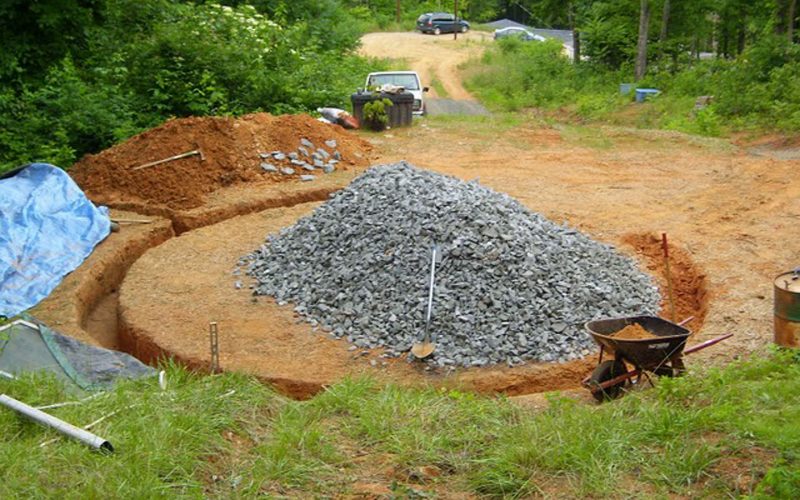Here at Ripples, we just received our first delivery of empty earthbags! We thank Green Acre Eco Village and Saddle Boch Brewery for graciously providing the bags. These salvaged polypropylene bags will soon be filled with insulative earthen material to form the walls of Ripples’ future off-grid headquarters. While we’ll be living there to maintain the facilities and preserve native habitat, the space will also be used by Ripples and local non-profit organizations for community projects, workshops, tours, and educational events on environmental and social justice issues – as well as podcasts of these activities for those who can’t be physically present.
As a roundhouse, the headquarters will resemble a giant cupcake, with our office located in the “frosting” section, churning out services for people and organizations worldwide, collaborating on issues of hunger, slavery, trail maintenance, education for girls, deforestation and other issues. It’ll be sweet once it’s built!
But every cupcake needs a wrapper. An earthbag building’s foundation is similar to the principles behind non-disposable cupcake wrappers that have minimum impact on the planet. According to EarthBagBuilding.com, this is the design intent of our building’s foundation:
• To create a stable, long-lasting base for the building.
• To minimize or eliminate the use of Portland cement, one of the most energy intensive and polluting materials used in building construction.
• To maximize the use of locally available material
• To minimize our impact on the site
The building will not have a basement, but a root cellar may be possible for storing the harvest at a later time (if we ever overcome our fear of root cellar spiders!). After the site is leveled and the center of the sphere is marked with a pole, the foundation trench is ready to be laid. Earthbag foundations can include a French drain under the building especially in places where flooding is possible, with the first couple layers of bags placed in this perimeter trench several inches below the soil. With our heavy clay soil that doesn’t drain well, this method helps prevent moisture from wicking up into the bags and also provides assurance against frost upheaval or soil disruption and earthquakes.
To avoid puncturing that first row of earthbags if our trench rocks are sharp, two bags (one inside the other) can be helpful. Other than these few minor concerns, the biggest problem is keeping the bags out of UV light. And even though the foundation is shallower than conventional ones, it serves an earthbag building well: “Frost protected shallow foundations have been proven to be quite effective in eliminating the need for deep foundations and providing better thermal protection for the house,” says Kelly Hart of GreenHomeBuilding.com. More information can be found at these referenced websites or at RipplesBlog.org.
Ripples is a 100% solar-hosted website that includes a blog, newspaper column, resources and services for individuals and non-profit organizations. Read more on this topic and others at www.RipplesBlog.org











